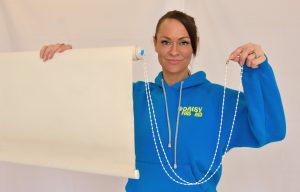Blind Cord Safety Campaign
It can take only 20 seconds for a toddler to die from strangulation if they get tangled in a blind cord.
Since 2004, RoSPA has called upon the blind industry to take voluntary action to reduce the risk of looped cords and has been working with the Department for Business, Innovation and Skills (BIS), CEN (the European Committee for Standardisation), the British Blind and Shutter Association (BBSA) and the Child Accident Prevention Trust (CAPT) to investigate design modifications and raise awareness of the safety issues.
Following this work, RoSPA has welcomed a major development in its campaign to stop window blinds posing a risk to the lives of young children and is pleased to announce that the new EN13120:2009+A1:2014, released in February 2014, strengthens the child safety elements of the standard.
The new standard amends a previous European standard published in 2009. The amendment considerably extends the standard scope so that it covers not only venetian blinds, roller blinds, vertical blinds and pleated blinds, but also honeycomb blinds, Roman shades, Austrian/Festoon blinds, panel blinds, plantation shutters and roll-up blinds.
It requires that new blinds must be “safe by design” or be supplied with the appropriate child safety devices installed. This means that where there is a loop that is present, or could be created, a safety device must be installed at the point of the manufacture. These safety devices either break under pressure, tension the cord or chain or provide the facility to store cord(s) out of reach. Professional installers must fit these devices. If you are fitting blinds yourself follow the instructions supplied with the product and make sure you fit any safety device.
The standard also imposes a maximum cord and chain length. All blinds must also continue to carry safety warnings. The main standard is supported by two additional standards: EN 16433:2014 and EN 16434:2014 which relate to testing requirements.
Manufacturers and retailers that do not comply could be prosecuted under the General Product Safety Regulations 2005.
Though these standards aim to make new blinds much safer, many homes are still fitted with blinds that will not incorporate these safety requirements. It is still important to raise awareness among parents, grandparents and carers to ensure that looped blind cords are kept out of the reach of children.
RoSPA’s own research shows that there have been at least 30 deaths across the UK due to looped cords since 1999 (18 of which have occurred since the start of 2010).
The Make It Safe campaign, of which RoSPA is a part, aims to raise awareness of the potential dangers of looped cords among families with small children.
As well as leaflets and advice, RoSPA has distributed more than 500,000 cleats free of charge to families, local authorities and community organisations over the last 18 months. Cleats can be fitted to tie blind cords high up out of the reach of children.
Why do blind cords pose such a risk?
Research indicates that most accidental deaths involving blind cords happen in the bedroom and occur in children between 16 months and 36 months old, with the majority (more than half) happening at around 23 months.
These toddlers are mobile, but their heads still weigh proportionately more than their bodies compared to adults and their muscular control is not yet fully developed, which makes them more prone to be unable to free themselves if they become entangled.
In addition, toddlers’ windpipes have not yet fully developed and are smaller and less rigid than those of adults and older children. This means that they suffocate far more quickly if their necks are constricted.
As with drowning, toddlers can be strangled quickly and quietly by looped cords with carers in close proximity, potentially unaware of what is happening.
To reduce the risk posed by looped cords, including blind cords, cords should be kept out of the reach of children.
Make it safe!
- Install blinds that do not have a cord, particularly in a child’s bedroom
- Do not place a child’s cot, bed, playpen or highchair near a window
- Pull cords on curtains and blinds should be kept short and kept out of reach
- Tie up the cords or use one of the many cleats, cord tidies, clips or ties that are available
- Do not hang toys or objects that could be a hazard on the cot or bed
- Don’t hang drawstring bags where a small child could get their head through the loop of the drawstring.

